Barcelona isn’t just a feast for the eyes with its stunning Gaudí architecture and Mediterranean views—it’s a genuine paradise for food lovers with its diverse Barcelona foods. From traditional tapas bars tucked away in the Gothic Quarter to the bustling La Boqueria market, the Catalan capital serves up an unforgettable culinary adventure that will leave you craving more.
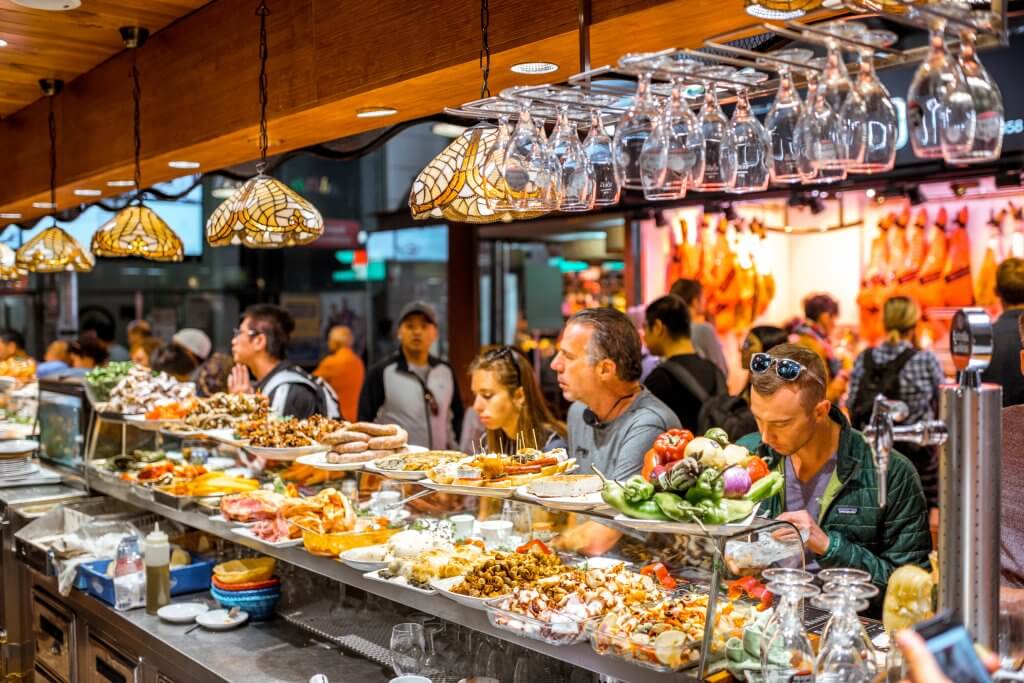
Barcelona’s cuisine is a celebration of fresh, local ingredients and bold, Mediterranean flavours. Catalan cooking, the heart of the city’s food culture, is a delightful mix of seafood, slow-roasted vegetables, and the golden richness of olive oil. Bell peppers are often used in traditional dishes like gazpacho and escalivada, adding vibrant flavor and refreshing nature to the meals.
Start your culinary adventure at La Boqueria Market, a sensory overload of colourful produce, artisanal cheeses, and fresh seafood or enjoy a traditional Spanish tortilla or patatas bravas at a local tapas bar. Fresh bread is a complementary element to dishes like escalivada and pa amb tomaquet, enhancing the dining experience.
Here, you’ll find the essence of Barcelona’s food scene.
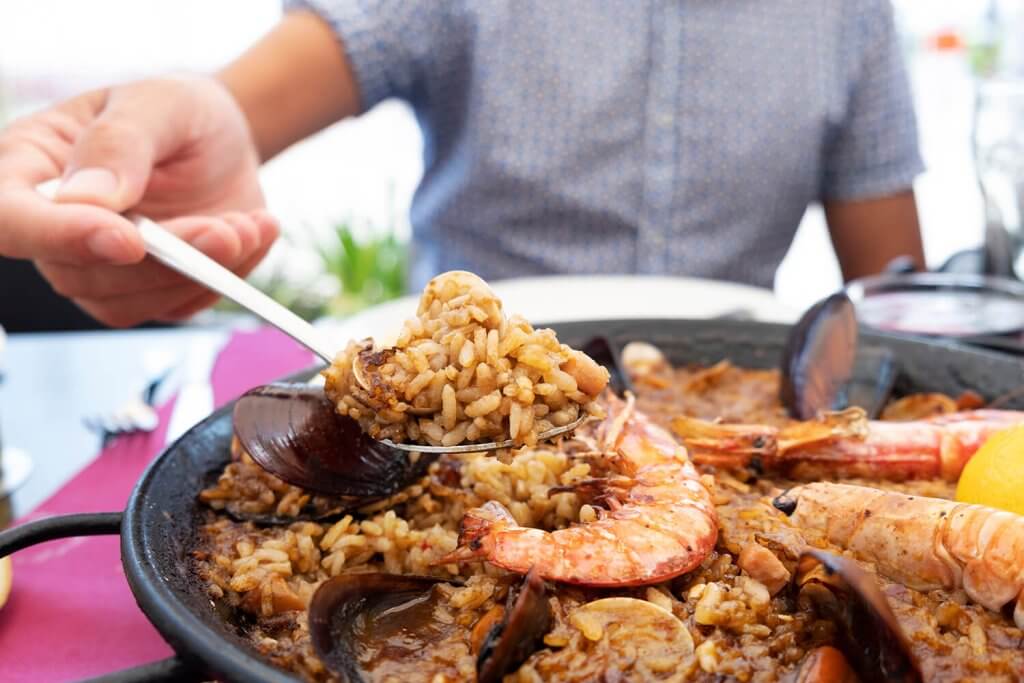
Barcelona’s coastal location means seafood plays a starring role in its cuisine.
Whilst paella might have originated in Valencia, Barcelona’s seafood version is nothing short of spectacular. Picture this: perfectly cooked bomba rice tinged golden with saffron, topped with fresh prawns, mussels, and calamari caught fresh from the Mediterranean. Head to beachfront restaurants in Barceloneta for the most authentic experience—just remember that traditional paella is a lunchtime affair!
TIP: Cal Pep is a Barcelona institution, famous for its seafood and convivial atmosphere.
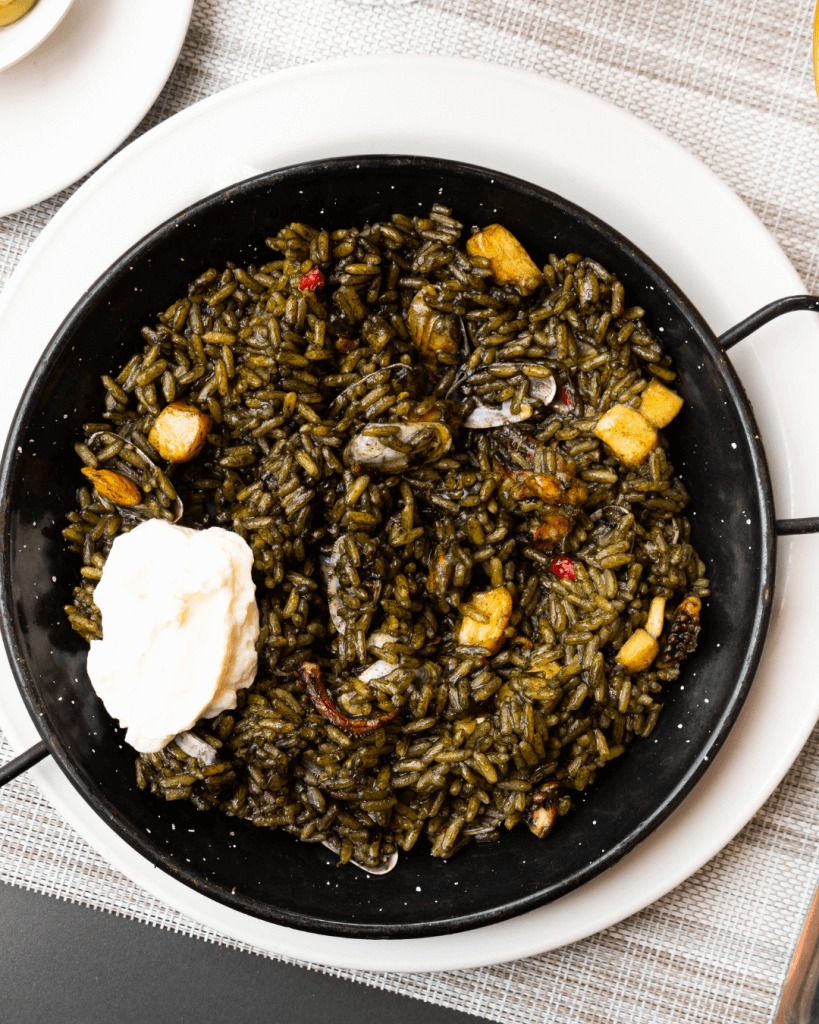
Attention seafood lovers! Don’t let its striking appearance fool you—this jet-black rice dish is a true delicacy. Coloured and flavoured with squid ink, arroz negro combines tender seafood, particularly squid and prawns, with perfectly cooked rice that absorbs all the rich flavours of the sea. The dish is typically served with a dollop of garlic aioli, which adds a creamy contrast to the intense maritime flavours. It’s a must-try for seafood enthusiasts and adventurous eaters alike!
No culinary journey through Barcelona would be complete without trying suquet de peix, a traditional Catalan fish stew that originated as a humble fisherman’s meal. This hearty dish transforms the Mediterranean’s bounty into pure comfort food—tender fish and seafood swimming in a rich, saffron-infused broth thickened with ground almonds and picada (a paste made from nuts, bread, garlic, and herbs). Head to the seaside restaurants in Barceloneta or the charming fishing village of El Masnou just outside Barcelona for the most authentic versions of this soul-warming dish.
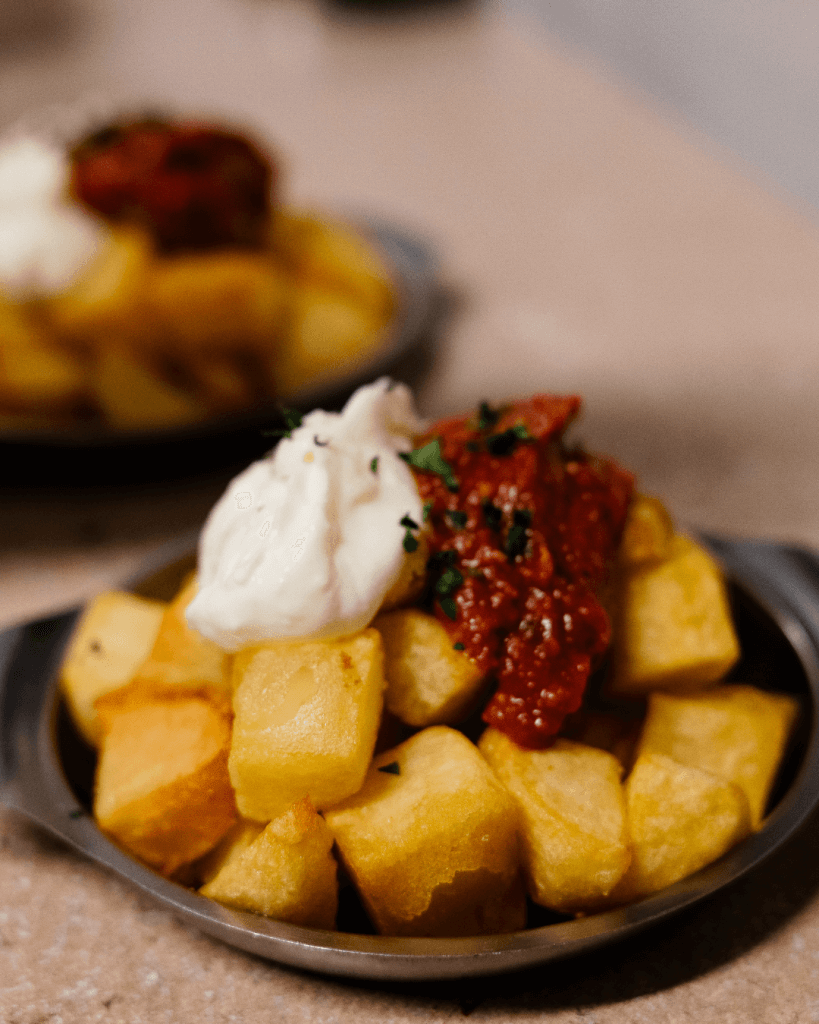
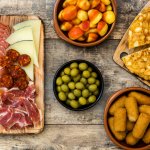
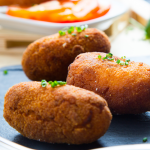
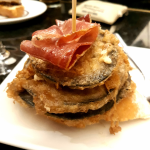
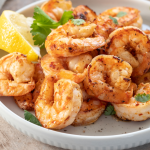
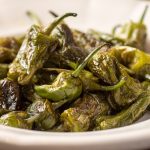
No visit to Barcelona is complete without indulging in the city’s tapas culture. These small, flavourful dishes are perfect for sharing and sampling a variety of local specialities.
Must-try classics include:
Patatas Bravas: Crispy potato cubes drowned in spicy tomato sauce and garlic aioli—the ultimate comfort food. The bravas sauce, made with tomatoes, sherry vinegar, onion, garlic, chilies, paprika, and fresh herbs, adds a tangy and slightly sweet flavor to the dish. Visit a local tapas bar to try this popular Barcelona food.
Bombas: Barcelona’s own creation of potato croquettes with minced meat, topped with two types of sauce.
Jamón Ibérico: Hand-carved slices of premium cured ham that melt in your mouth.
Pimientos de Padrón: Small green peppers blistered and seasoned with sea salt—some spicy, some mild, it’s food roulette!
Gambas al Ajillo: Succulent shrimp sautéed in olive oil with thinly sliced garlic and chili peppers. This classic tapa is a favourite at many Barcelona eateries.
Croquetas: These crispy, creamy bites are a staple of any tapas menu. The most traditional filling is jamón (ham), but you’ll find countless varieties including wild mushrooms, spinach with pine nuts, or seafood. The secret lies in the perfectly crispy exterior giving way to an impossibly creamy béchamel filling—pure comfort food at its finest! Fried eggs are also a popular addition to dishes like pisto, enhancing the meal with their rich flavor.
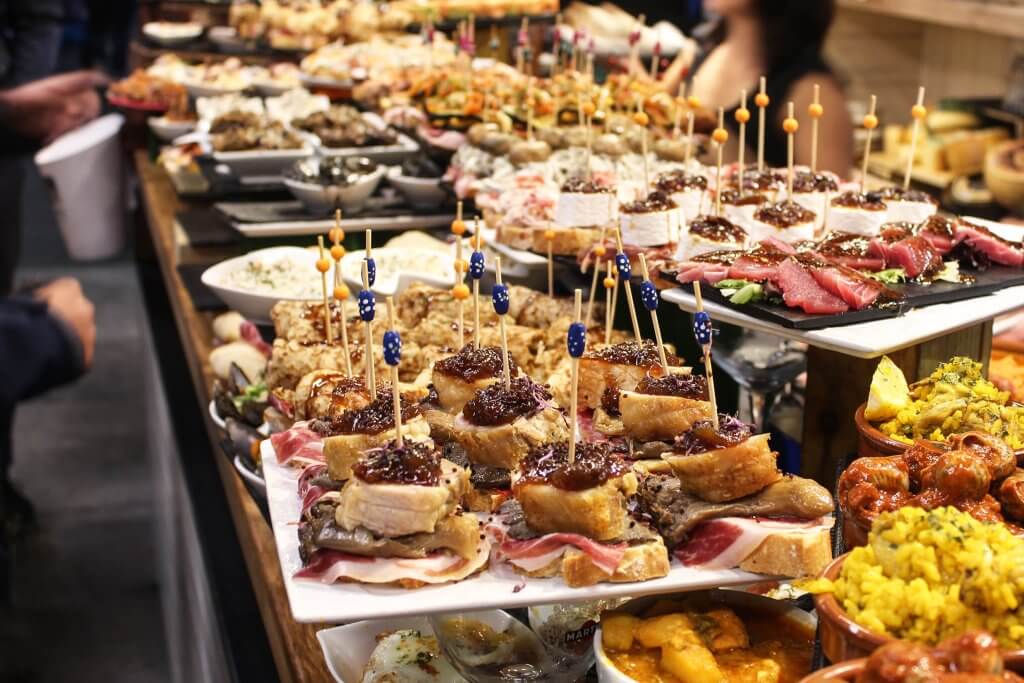
While originally from the Basque Country, Barcelona has embraced pintxos culture with open arms. These small, elaborate bites served on bread and held together with a cocktail stick (pintxo means ‘spike’) are both a visual and gastronomic delight. Manchego cheese is a popular pairing with traditional Spanish meats like Jamón Ibérico and chorizo.
Head to Carrer de Blai in the Poble Sec neighbourhood, known as “Pintxo Alley,” where you’ll find dozens of bars serving these miniature culinary masterpieces. From classic combinations like tortilla española with piquillo peppers to modern creations featuring fresh tuna tartare or grilled foie gras, pintxos offer a perfect way to sample multiple flavours in one evening.
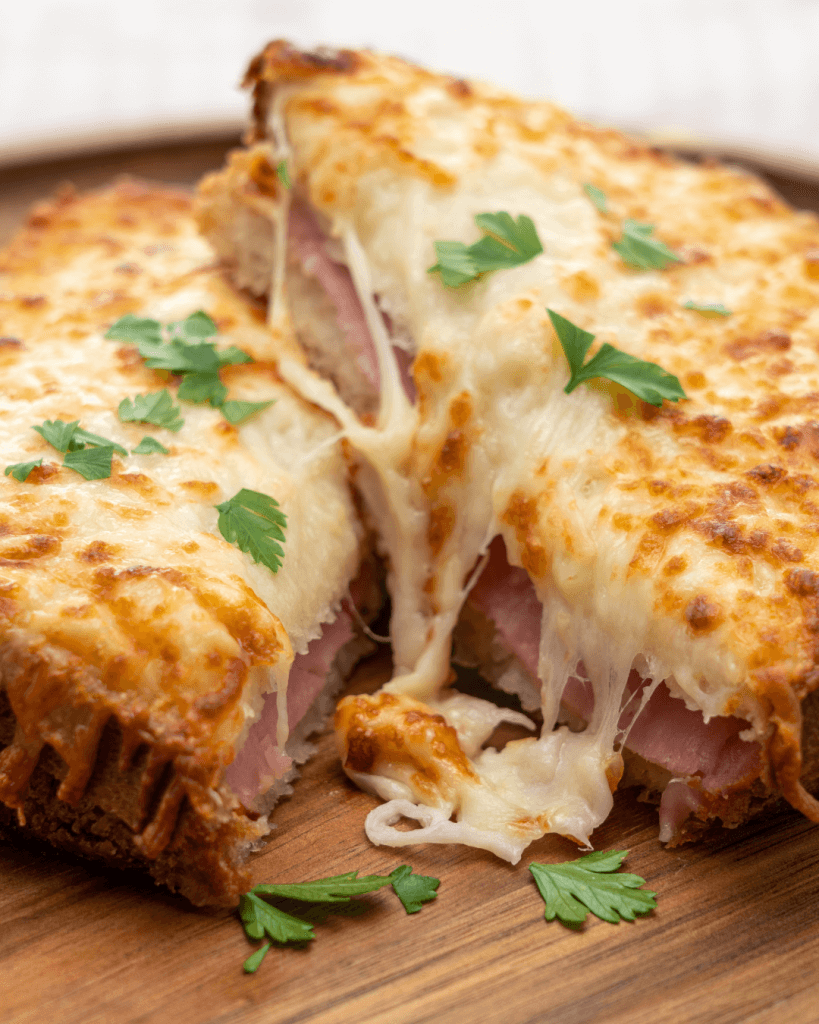
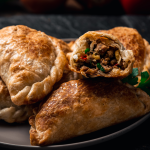
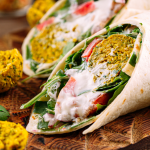

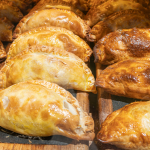
Barcelona’s street food scene is a vibrant mix of traditional and international flavours. Here are some must-try street foods:
Empanadas: Savory pastries filled with meat, cheese, or vegetables, perfect for a quick and tasty snack.
Falafel: Middle Eastern cuisine has a large influence in Barcelona, making falafel easy to come by. This vegetarian dish is usually served in a pita with hummus and vegetables.
Bikini Sandwich: A toasted sandwich with ham, cheese, and truffle oil.
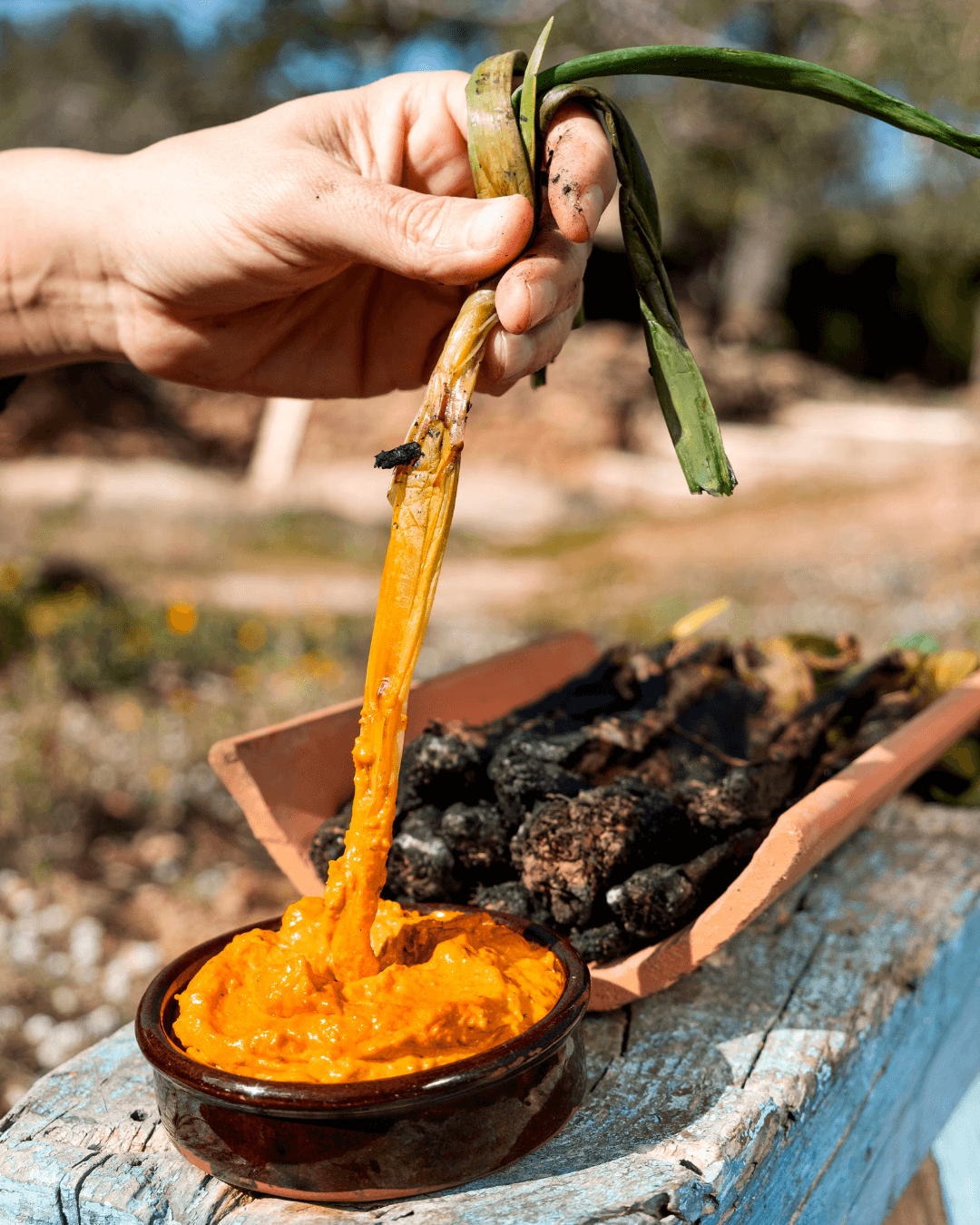
Discover the unique flavours of Catalan cuisine with these local specialities:
Pa amb Tomàquet: Pa amb tomàquet, also known as pan con tomate, is a traditional Catalan bread dish that is a staple in Barcelona’s food scene. This simple yet delicious dish consists of toasted bread rubbed with garlic and ripe tomato, then drizzled with olive oil and sprinkled with salt. Traditionally, stale bread is used in pa amb tomàquet, showcasing culinary resourcefulness.
Botifarra amb Mongetes: A hearty dish of grilled sausages served with white beans, often seasoned with garlic and parsley.
Calçots: If you’re visiting in spring, don’t miss these grilled spring onions, typically served with romesco sauce.
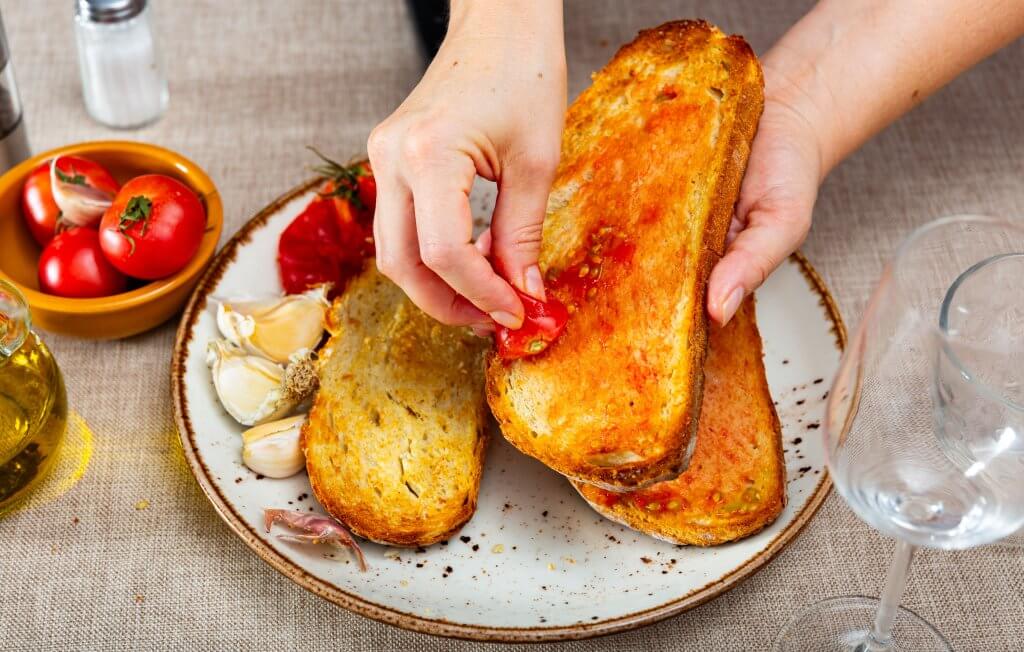
Olive oil is an essential ingredient in Catalan cuisine, and it’s often referred to as “liquid gold” due to its rich flavor and numerous health benefits. Extra virgin olive oil, in particular, is highly prized in Catalonia for its delicate flavor and high quality. It’s used liberally in many traditional Catalan dishes, including pa amb tomàquet, escalivada, and romesco sauce. The use of olive oil in Catalan cuisine is not only a matter of taste but also a reflection of the region’s rich cultural heritage and its strong connection to the Mediterranean diet.
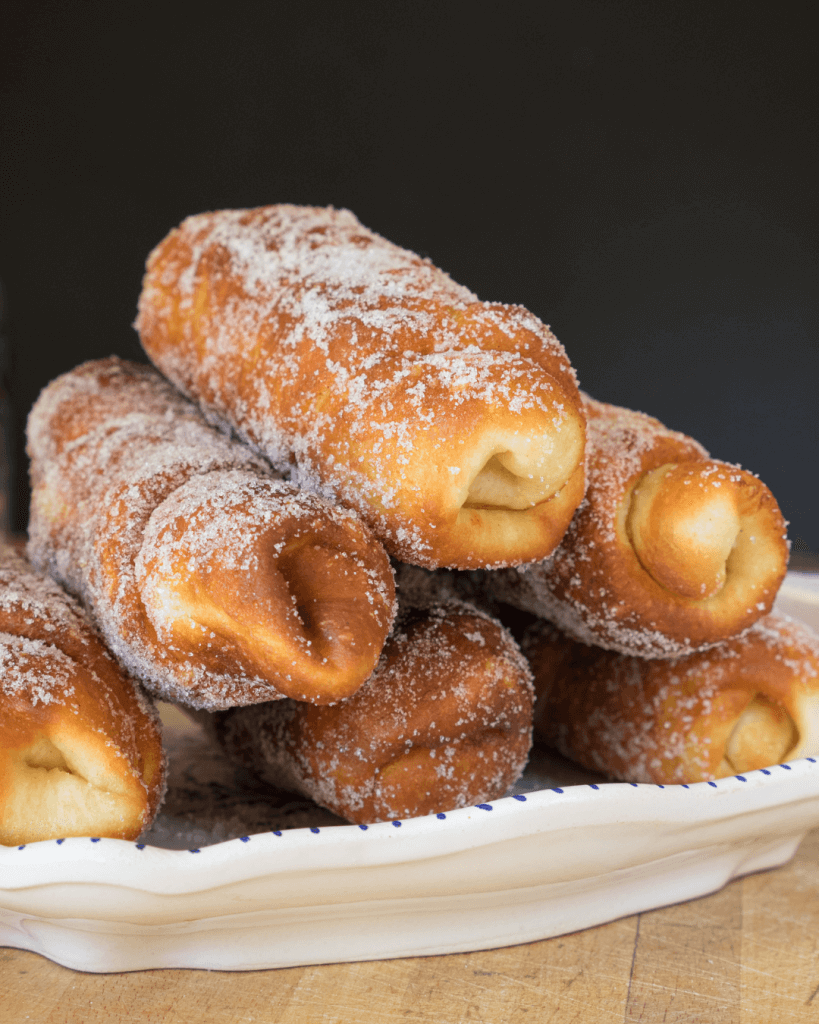
Satisfy yoursweet tooth with these traditional Catalan desserts:
Crema Catalana: Similar to crème brûlée, this creamy custard is infused with citrus and cinnamon, topped with a layer of caramelized sugar.
Mel i Mató: A simple dessert of fresh cheese drizzled with honey, often served with walnuts.
Xuixos: These deep-fried pastries filled with crema catalana have become a breakfast favourite in Barcelona. Think of them as Catalunya’s answer to the croissant—but even more indulgent.
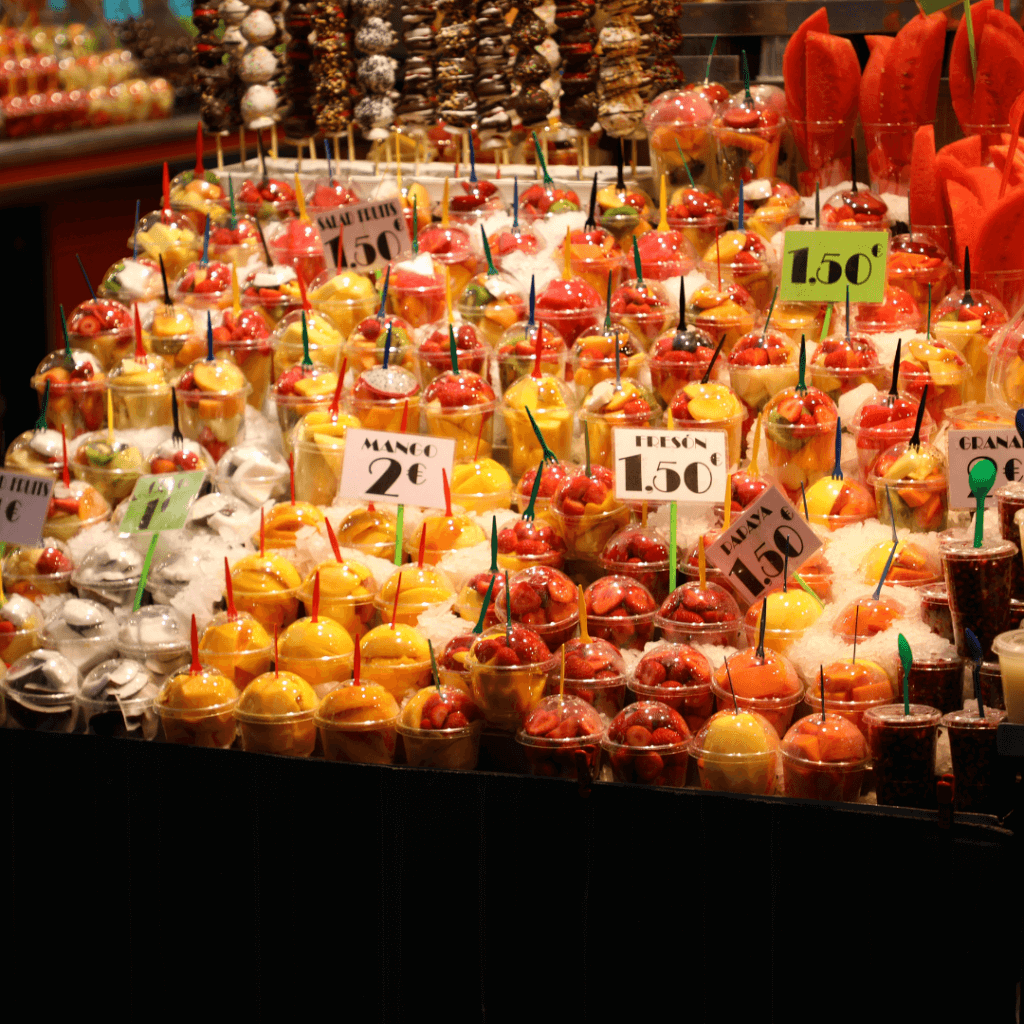
La Boqueria: This iconic market off La Rambla is a feast for the senses. Don’t miss Bar Pinotxo for some of the best tapas in town.
Santa Caterina Market: Less crowded than La Boqueria, this market is known for its undulating, colourful roof and excellent local produce.
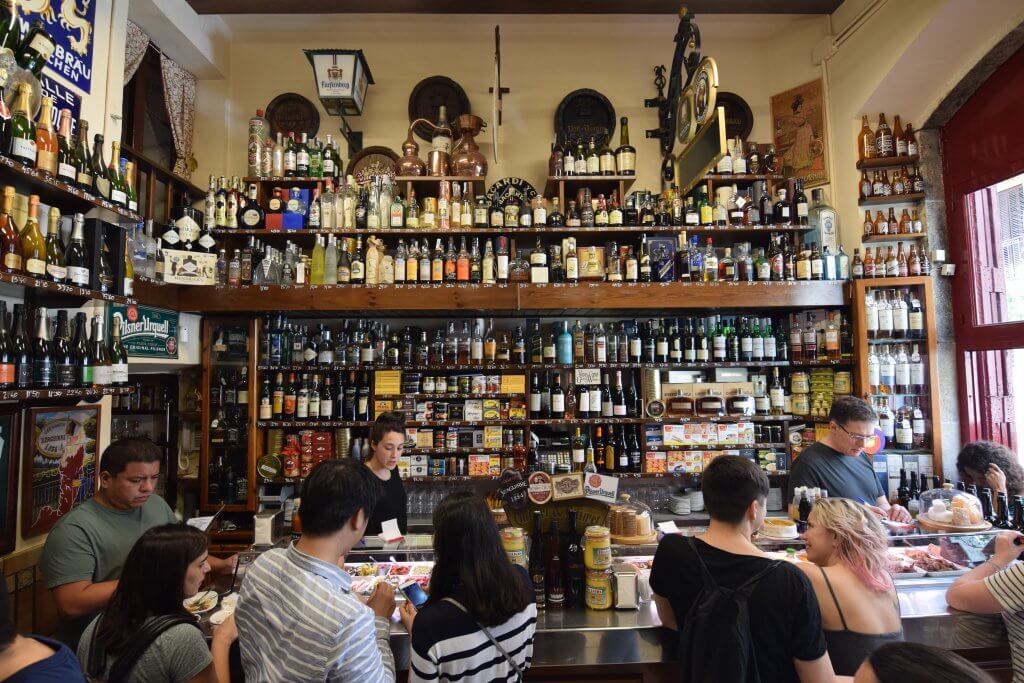
Bar del Pla: A stylish tapas bar in the Gothic Quarter, known for its mix of classic and innovative dishes.
Quim de la Boqueria: Located in La Boqueria market, this stall serves some of the best market-fresh cuisine in the city.
El Xampanyet: A must for those looking for authentic Spanish tapas.
La Cova Fumada: A hidden gem known for the best bomba in town.
Enjoy a pint-sized tapas bars on Carrer de Blai, with a wide range of tasty tapas.
To truly immerse yourself in Barcelona’s foodculture, consider these experiences:
Cooking Classes: Learn to make paella, fideuà, or traditional tapas in a hands-on class and discover the different types of olive oil used in Barcelona’s cuisine, from extra virgin olive oil to arbequina oil.
Food Tours: Join a guided tour to discover hidden culinary gems and learn about the city’s food history.
Wine or Beer Tasting: Sample local Catalan wines and cava at a bodega or wine bar.
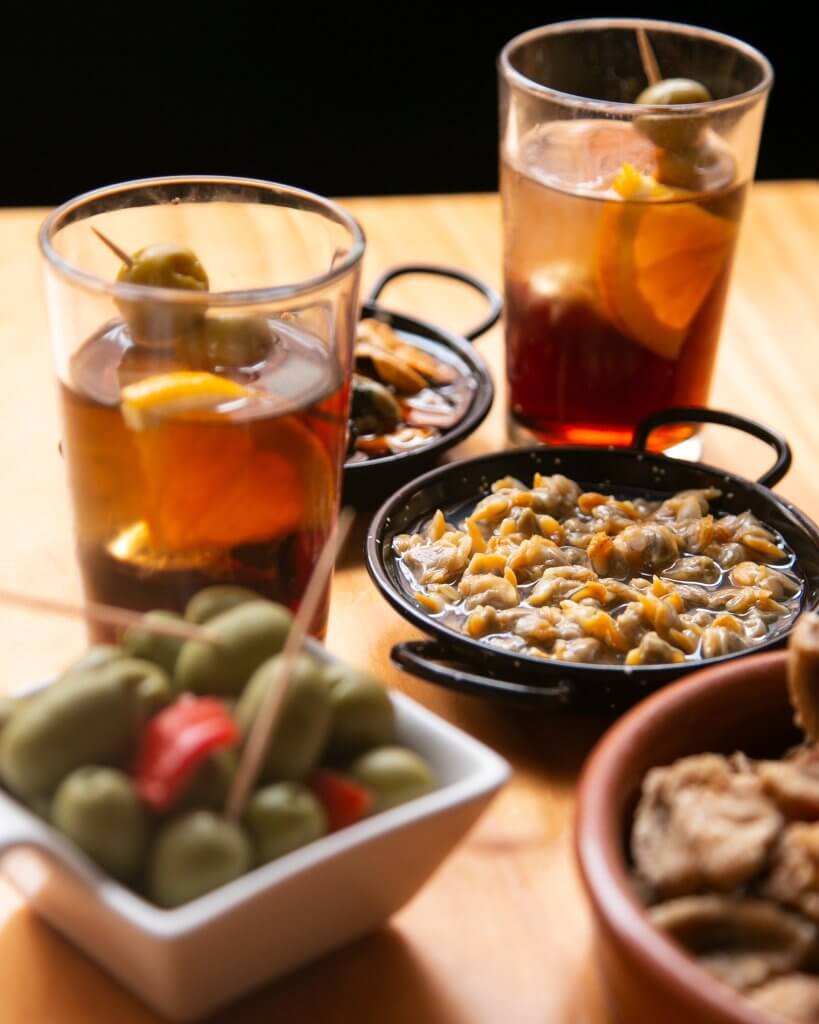
Timing is Everything: Catalans eat late—lunch starts at 2 PM, dinner rarely before 9 PM
Menu del Día: Take advantage of fixed-price lunch menus for excellent value
Vermut Hour: Join locals for pre-lunch vermouth and tapas, especially on Sundays
Reservation Required: Book ahead for popular restaurants, particularly for weekend dinners
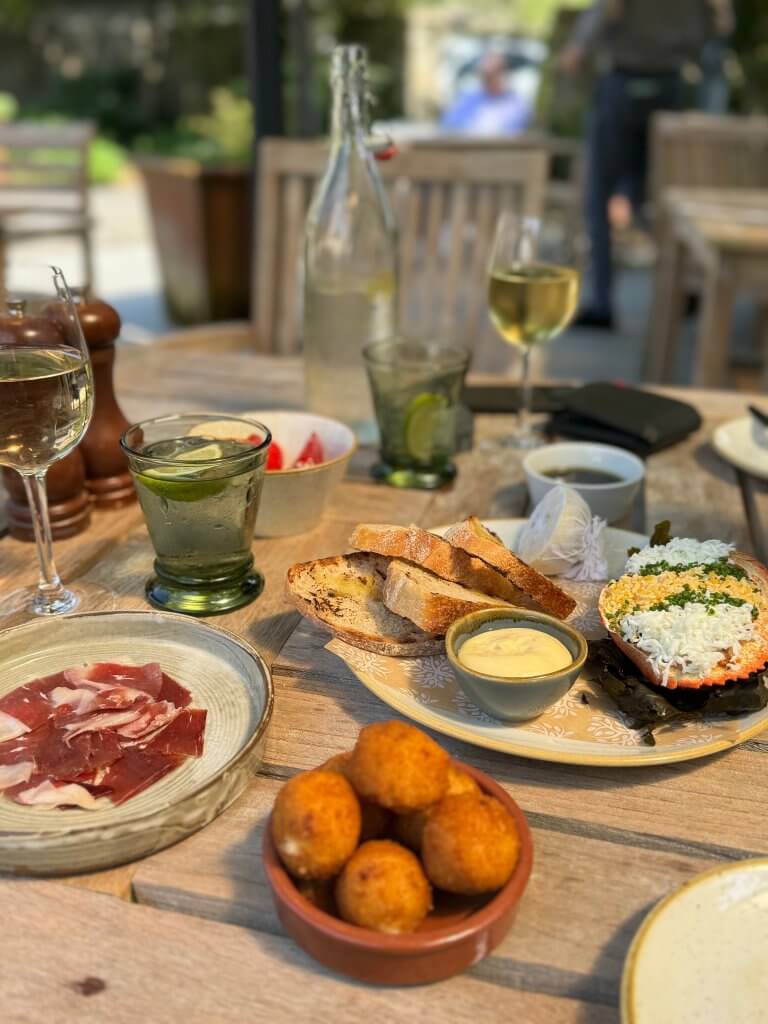
Barcelona’s food scene perfectly balances tradition with innovation. While classic dishes remain sacred, modern Catalan chefs aren’t afraid to experiment. From molecular gastronomy to fusion tapas, the city’s contemporary restaurants offer exciting new interpretations of traditional flavours.
Experience Barcelona through its food, and you’ll understand why this city captures the hearts (and stomachs) of visitors worldwide. Every meal is an opportunity to discover something new, whether you’re sampling seafood at a century-old taverna or trying avant-garde tapas at a modern wine bar.
Remember, in Barcelona, food isn’t just sustenance—it’s a way of life, a social occasion, and an expression of cultural identity. So take your time, order another round of tapas, and savour every moment of your culinary adventure in this remarkable city. Bon profit!